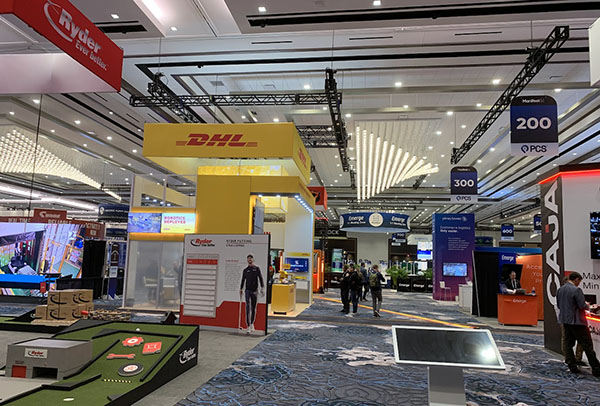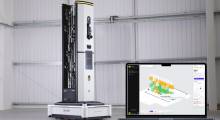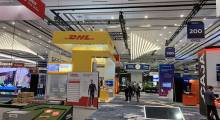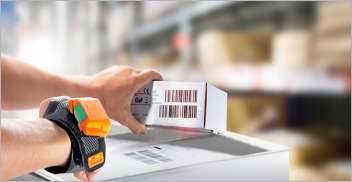LAS VEGAS—The Manifest 2023 conference here last month featured panel discussions and exhibits around many of the latest supply chain technologies, from autonomous trucks and mobile robots to automated storage and software.
With post-COVID-19 e-commerce shifts, ongoing labor shortages, and recessionary fears as a given, most of the speakers, exhibitors, and attendees at this year's Manifest were still bullish on automation.
They acknowledged the challenges of identifying the best robots for a particular job, as well as the growing needs for interoperability and easy ways to collect, analyze, and present data.
Manifest attendance doubles in second year
More than 3,000 people attended Manifest at Caesar's Forum—at least double the 1,500 attendees at last year's inaugural event, according to event organizers. Conference sessions began on Tuesday, Jan. 31, but the show floor with about 200 exhibitors wasn't open until Wednesday, Feb. 1.
Attendees included Fortune 500 companies, numerous investors, and robotics startups. The first group was the most sought after by exhibitors as potential customers, but the latter two could have learned about supply chain and logistics innovations in the keynotes and panel discussions.
Several established robotics vendors told Robotics 24/7 that they were attending the event to assess whether to exhibit next year.
Manifest offered a rendezvous area near reception and a more successful meeting area in the middle of the booth displays. Caja Robotics' robotic storage system was among the robots near the front and center of the exhibit hall (see video at the bottom of this article). Self-driving and semi-autonomous trucks from companies such as Kodiak Robotics and Torc Robotics lined the back aisle.
Networking events included meals and drinks, evening receptions, and a Women's Luncheon on Thursday, Feb. 2. One of the most popular booths wasn't dedicated to autonomous vehicles or robots; it was Geodis' “Puppy Park,” where attendees could take a break with actual puppies.
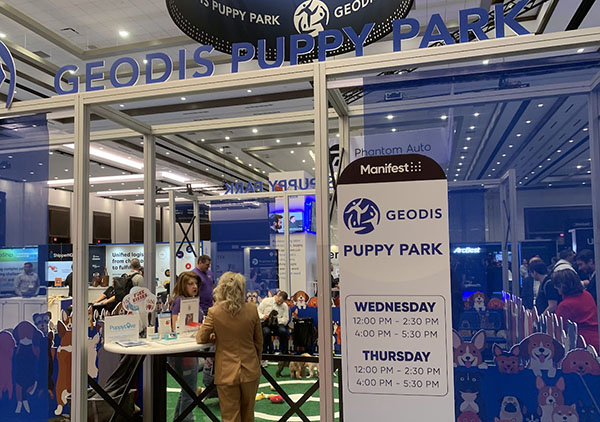
It's never too late to start with robotics
“People don't know where to start,” said Zac Boehm, vice president of robotic solutions at Hy-Tek Intralogistics in a panel on trends, opportunities, and challenges of warehouse robotics. “A lot of our customers say they want a robot, and we kick into educational mode. There's board-driven versus operations-driven decisions.”
“What industries are most interested in robots?” asked Bob Trebilcock, moderator and executive editor of Modern Materials Handling (a sibling site to Robotics 24/7).
“Apparel, e-commerce, food and beverage, and fulfillment,” replied Boehm.
Companies of all sizes should carefully evaluate both technologies and partners, according to Manifest speakers. DHL Supply Chain has 500 sites in North America, so coordinating research and development and finding the right robots to solve its problems are real challenges, said Brian Gaunt, senior director at the third-party logistics provider (3PL).
“We look for best-of-breed technologies and partner with companies of all sizes,” he told Robotics 24/7. “We have a very structured process—our innovation playbook looks at creativity and functionality, as well as a laundry list of other things, such as autonomy and how a robot interacts with associates.”
Unlike some other 3PLs, DHL is open to re-engineering its processes to maximize efficiency with robotics, Gaunt said. “But you can't just drop robots into Steps 3 to 7 of a workflow,” he said. “You have to consider support, safety, multiple deployments, and service-level agreements.”
DHL has relationships with AutoStore, Boston Dynamics, Locus Robotics, and Vecna Robotics, among others.
“The balance between existing, fixed infrastructure and flexible automation and ROI [return on investment] is based on the customer,” said Gary Allen, vice president of supply chain excellence at Ryder Supply Chain. “AMRs [autonomous mobile robots] need one and a half years, while an ASRS may take one to two years, depending on volume.”
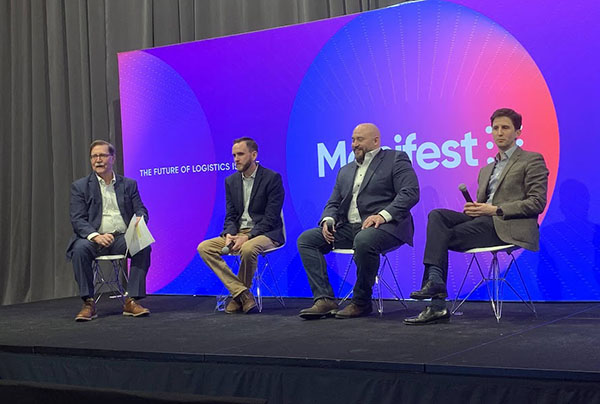
RaaS helps manage risk, ROI
The robotics-as-a-service (RaaS) model can also help businesses adopt or scale robotic fleets, but they need to understand the difference between pay-per-pick, leasing, and other financing arrangements, said multiple Manifest speakers.
“RaaS is a great option for customers to manage risk,” said Patrick Kelleher, global chief development officer at DHL Supply Chain.
RaaS and AMRs can deliver immediate value, observed Ryder's Allen. “We've got 15,000 drivers and have evaluated 250 technologies,” he said.
“It's about lines or shifts per day,” Allen added. “Locus robots are good for higher SKU count for CPG [consumer packaged goods], while autonomous forklifts are a better option for moving pallets.”
“We serve automotive, aerospace, healthcare, food, retail, and oil and gas,” he said. “About 20% of our 400 warehouses have some automation, and we manage a total of 50 million to 60 million sq. ft. We've developed our own modeling tools based on automation category.”
Ryder acquired omnichannel provider Whiplash last year and is developing its own integrated warehouse systems so that it has control over the data it sends customers. “We have our own analytics team and are keeping it in engineering rather than in IT to stay with operators,” said Allen.
“We only give merit to proofs of concept in production, not laboratory or limited site demonstrations,” said Thomas Evans, robotics chief technology officer at Honeywell. “It's about building confidence on the customer side and proving adoption at scale.”
However, “customers should have some skin in the game,” noted Caja's Barkay. “I prefer a hybrid model, or it's too easy to just move choke points in the process.”
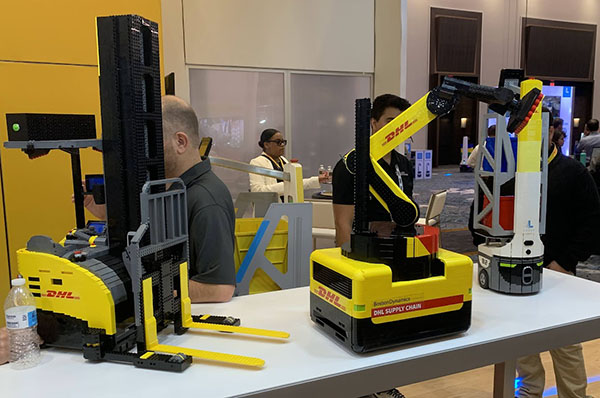
Flexibility and scalability are 3PL mantra
“We evaluate different robots by where they add value, automating repeatable tasks,” said Marv Cunningham, chief operating officer and chief information officer at GXO Logistics. “Then we look at scalability, reliability, and flexibility. Our design tenet is 'Does it solve a problem for the customer?' We want to be a true design partner.”
However, there is no one-size-fits-all solution, he told Robotics 24/7. “We have yet to see a single vendor that solves the entire warehouse,” Cunningham said. “There's little standardization or interoperability among systems from multiple vendors today, so GXO's differentiator is our ability to seamlessly integrate our operations with those of end users.”
“Robotics companies don't want to give up their 'secret sauce,' but depending on the use case, it would be nice if they shared location data for movement and safety around people, plus information about spills and right of ways,” said DHL's Gaunt. “The industry will go there.”
DHL Supply Chain has 12 innovation focus areas, including supply chain resilience, real estate footprint, and integrating the digital and physical worlds, noted Kelleher. “The innovation funnel is about managing risk,” he said.
“We've deployed thousands of LocusBots for 150% to 170% improvements in each-picking productivity,” said Kelleher. “We've seen different results between warehouses based on the people in them.”
Software-defined automation is ideal for multi-tenant distribution centers, said Avihou Barkay, executive vice president and general manager for North America at Caja Robotics. Instead of the old method of segregating storage by product or brand, Caja's system does for physical storage what the cloud did for data processing—increase efficiency, he said.
About the Author
Follow Robotics 24/7 on Linkedin
Article topics
Email Sign Up

